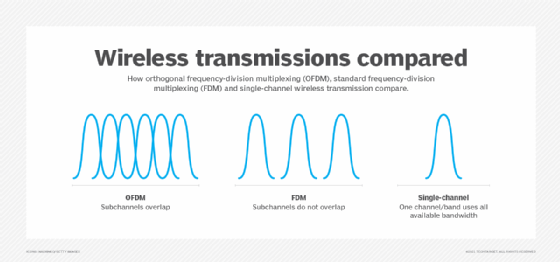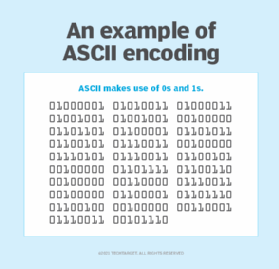telegraph
What is a telegraph?
A telegraph is a communication system that sends information by making and breaking an electrical connection. It is most associated with sending electrical current pulses along a wire with Morse code encoding.
The telegraph is the forerunner of all communication systems today, and many of the principles developed for the telegraph are still in use in modern communication and computer networks. The term comes from the Greek words tele, meaning at a distance, and graphien, meaning to write.
Invention of the telegraph
Throughout history, humans have used various methods to send messages farther than the voice can be heard and faster than a written message could be carried. These included primitive methods, such as signal fires, smoke signals and drums. These could only send simple messages and couldn't be used for rapid back-and-forth communication.
Various visual signaling systems were developed in the 1700s to communicate between ships at sea. Semaphore flag signaling used the positioning of two flags to send messages. Other systems used flashes of light provided by mirrors or shutters over lanterns to send messages. Such systems are examples of encoding a message so it can be transmitted.
The invention of the telegraph is most often attributed to Samuel Morse, developing it in 1835 and patenting it in 1837. But many other researchers were working on similar systems, which contributed to the scientific understandings that made it possible.
In the early 1800s, the understanding of how to generate, store and transmit electricity over wires was being developed. In the early 1830s, Joseph Henry discovered the principles of electromagnetism and demonstrated a crude signaling device similar to a telegraph. For his discoveries, the unit of electromagnetism, the henry, was named after him. Several other inventors also demonstrated and patented systems of communication using electricity, but these often relied on using magnetism to position a needle and were not reliable.
Samuel Morse's system, called Morse code, encoded letters with simple on and off signals of two lengths, called dots and dashes. This could be thought of as an early example of binary code. Such messages could be reliably transmitted over large distances and were relatively easy to learn to read and transmit. Further refinements to Morse code made more common letters shorter to transmit.
Various methods were used to transmit and send Morse code. In Morse's original designs, a board with various electrical contacts for each letter was used; the operator would run a stylus over the contacts for each letter to create the pulses. Soon after, a simpler system with a handswitch, called a key, was developed by Alfred Vail. The dots and dashes could be read out with various mechanisms, such as lights, buzzers or electromagnetically actuated relay clicks, or even written out to ticker tape.
The first publicly operated demonstration telegraph system was inaugurated on May 24, 1844. The first message transmitted was: "What hath God wrought!"

Further development of the telegraph
The demand for sending messages by telegraph and the high cost of running wires quickly led to several advances. In 1871, a system for full-duplex transmission enabled a single wire to be used to send and receive at the same time. This was quickly augmented with multiplexing systems by Jean-Maurice-Émile Baudot to enable several operations to communicate over a single wire at a time. His system would send a set number of characters for each user on the line with the sender and receiver synchronized to know which user to direct it to.
These are early examples of time-division multiplexing. Such systems could use strips of paper with pre-punched holes to send messages, similar to later punch cards. Baudot's system required characters with the same amount of bits, so he devised Baudot code with 5 bits per character instead of using Morse code.
The invention of the telephone by Alexander Graham Bell in 1876 also spurred telegraph use instead of completely replacing it. Methods were developed to enable a single wire to carry both telephone and telegraph transmissions at the same time.
The introduction of the vacuum tube enabled many advances in the telegraph. A vacuum tube could act as both an amplifier and a repeater, leading to longer and more reliable transmission wires. It also enabled the sending of analog signals with carrier signals and frequency-division multiplexing, a forerunner to modern orthogonal FDM (OFDM) used in Wi-Fi and cellular data, so after that, a single cable could carry as many as 24 simultaneous signals.

Early undersea cables were used over shorter distances in the late 1800s to connect the British Isles and other islands together. Intercontinental undersea cables were unreliable and slow to transmit telegrams until the mid-1900s. Today, undersea fiber optic cables carry the majority of intercontinental data.
Guglielmo Marconi pioneered the use of radio waves for sending telegraph messages in 1894. Radio telegraphy enabled messages to be sent from ships to land and even across the Atlantic Ocean. Famously, Marconi's wireless telegram was used during the Titanic rescue operation and to transmit news of it around the world. This early wireless telegraph research is still applicable to modern Wi-Fi 6 and 5G cell towers.
Expanding on the early work of Baudot, in the early 1900s, automated typewriters were devised that could produce Baudot code on punched tape, and readers to translate the responding code back into printed characters were devised. These early teleprinters or teletypewriters led to the development of the teletype by AT&T, which could perform the full send and receive operations. These teletype systems were eventually used as the first terminal interfaces for early computers.

As teleprinter systems continued to advance, the limitations of the 5-bit Baudot code became apparent. This led to the creation of American Standard Code for Information Interchange (ASCII) in 1966. ASCII is still a common character encoding format and can still be seen in use on the internet and in files today.
The ever-expanding telegraph networks required increasingly complicated control systems. For many decades, all switching was performed manually by operators. Eventually, AT&T and other corporations developed automated switching networks that could route messages as requested. These switched networks further led to automated telephone switching and to modern switched fiber networking.
Legacy of the telegraph
Although the telegraph was replaced by fully digital communication in the 1970s and 1980s, the technology pioneered by its use can still be seen today. A clear line of developments in binary communication can be traced from Morse code to modern ASCII. Advances in analog carriers enabling more channels on a single line led to modern orthogonal frequency-division multiple access and coaxial cable transmissions. Automated switching and teleprinters were instrumental to the development of digital computers and the modern internet.
See what key messaging patterns enterprise architects should know; how pub/sub messaging works, and why it matters today; and the differences between synchronous vs. asynchronous communications.
Explore a guide to building an enterprise unified communications strategy, top 10 must-have unified communications features in business and 10 essential business benefits of unified communications.








